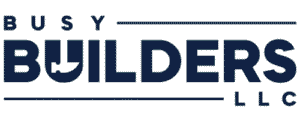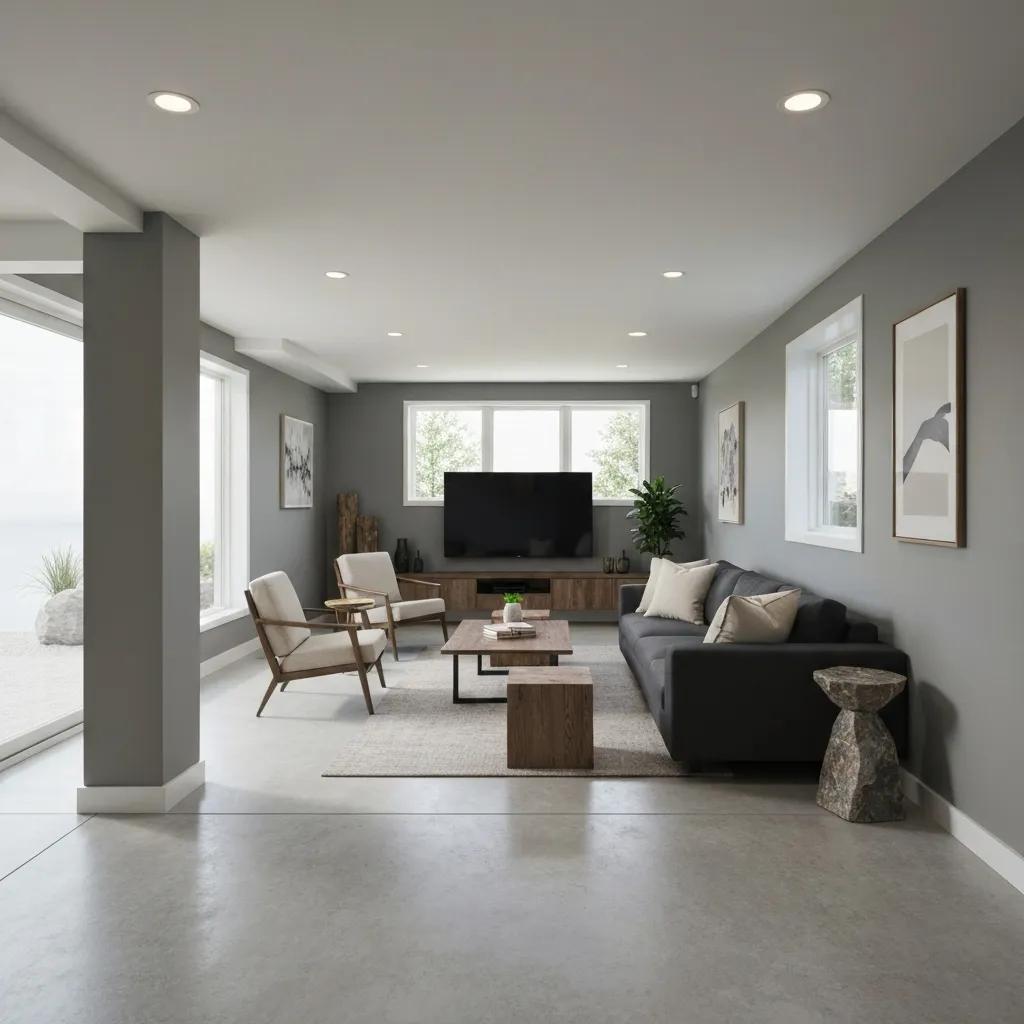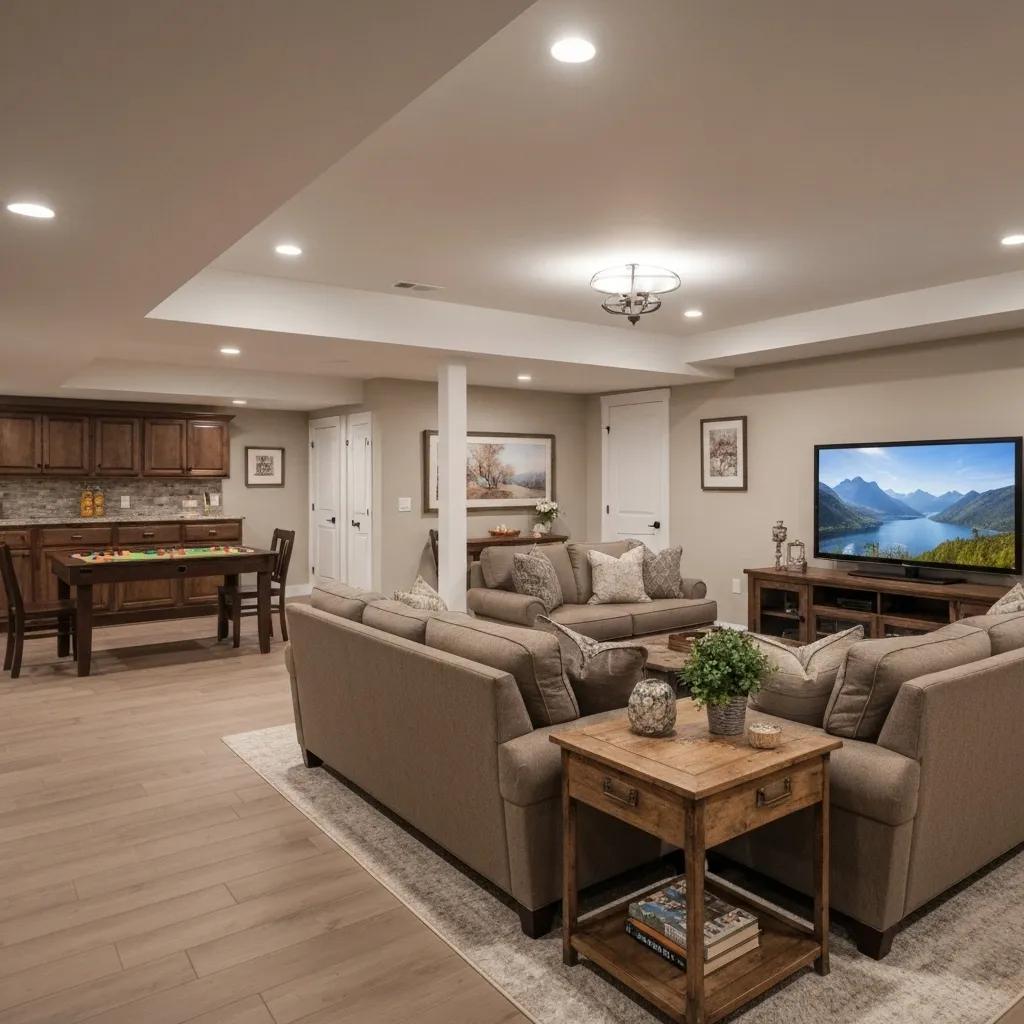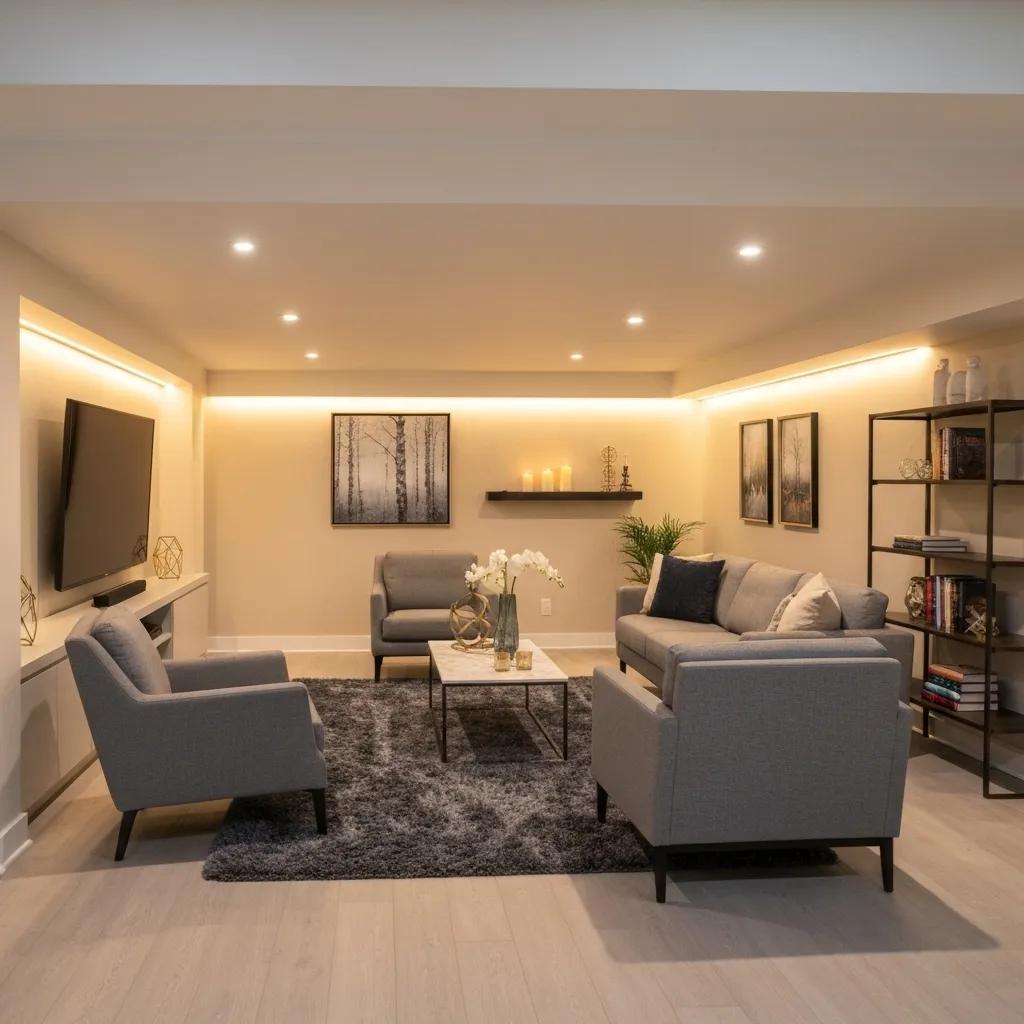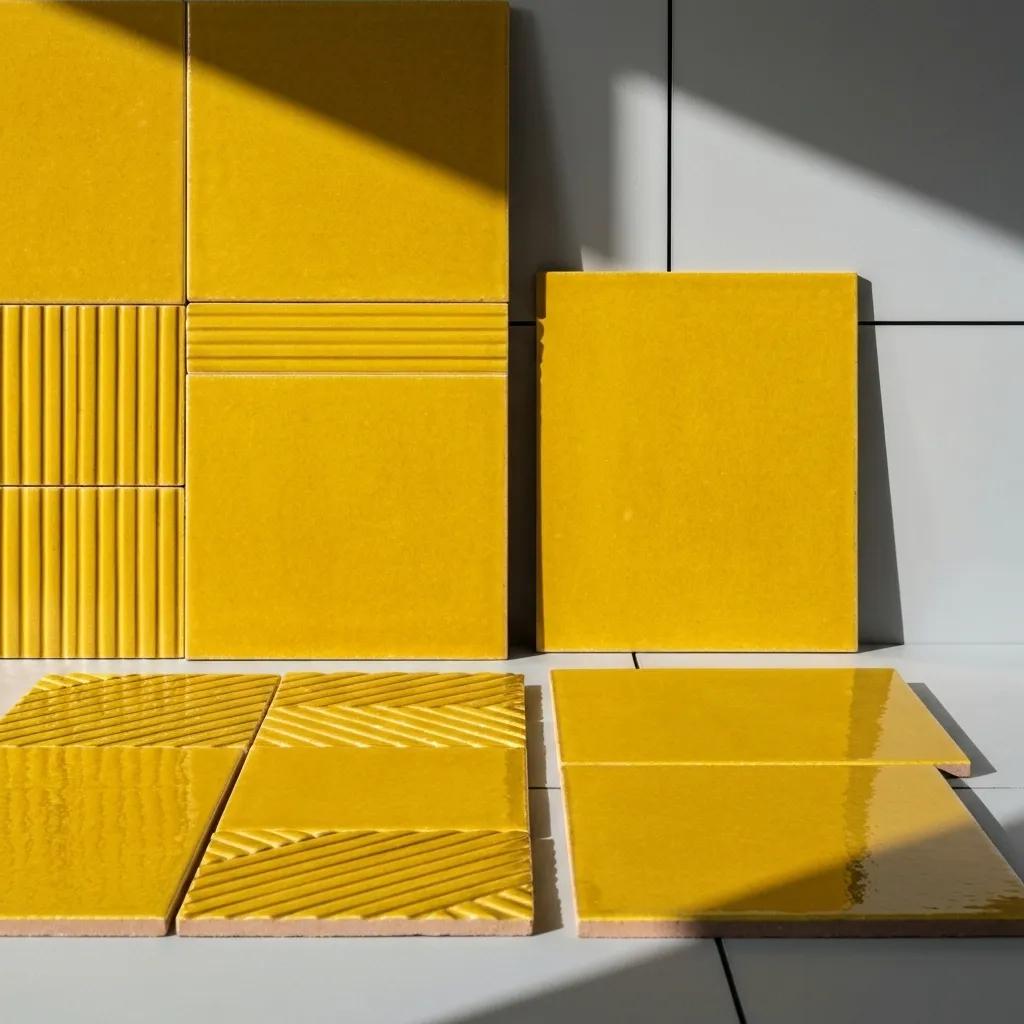
What to Know About 2025 Top Addition Trends
In the ever-evolving world of home remodeling, understanding the latest trends in home additions is essential for homeowners who want to maximize both their living space and property value. With the rise of new technologies, sustainable practices, and innovative design ideas, 2025 is set to bring forward dynamic changes that will impact everything from aesthetics to functionality. Homeowners in and around Des Moines, Iowa, and the surrounding 40-mile radius can now explore trends that not only meet modern style requirements but also respect budget constraints and local building regulations. This article provides a comprehensive look at key addition trends for 2025, drawing on insights from industry reports, peer-reviewed studies, and real-world examples. Topics include exploring popular styles, assessing sustainable materials, incorporating smart home technologies, and understanding the financial implications of remodeling projects. With a focus on enhancing solutions such as double digit addition, modular addition, and teaching concepts like addition in math—all analogies that mirror the step-by-step nature of home additions—this guide connects the dots between technical expertise and creative design. As general residential contractors with decades of experience servicing the local area, our goal is to empower owners with the knowledge needed to transform their homes. Let’s explore the trends that will define 2025 home additions.
Understand the Key 2025 Home Addition Trends to Follow
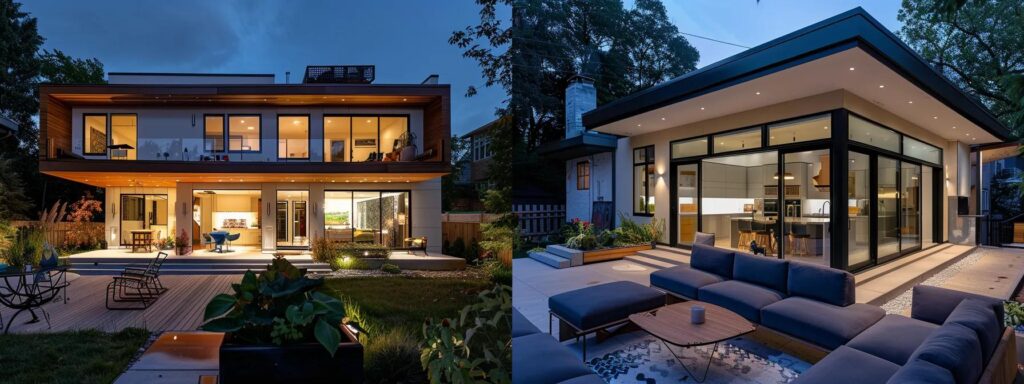
Home additions in 2025 are embracing several emerging trends that aim to merge design elegance with practical functionality. One major trend is the increasing adoption of customizable modular additions, which allow homeowners to expand their living spaces in increments and with minimal disruption, similar to the precision of double digit addition in math where every unit has a defined role. Modern modular designs focus on flexibility and scalability, addressing not only spatial growth needs but also the dynamic layouts of contemporary lifestyles.
Identify the Most Popular Styles in Home Additions
The most popular styles in home additions reflect both contemporary aesthetics and timeless design principles. Homeowners are gravitating towards minimalist designs that deliver clean lines and open floor plans. The use of natural materials like reclaimed wood and natural stone has made a significant comeback, bridging the gap between modern architectural elements and rustic charm. This trend mirrors the principles of elementary arithmetic, where every element (or digit) holds intrinsic value and purpose. For instance, style integration that blends industrial accents with soft, neutral color schemes has been shown to create spaces that feel both modern and welcoming. Key elements include large windows to invite natural light, sliding glass doors that provide outdoor access, and integrated seating that doubles as storage. These designs not only enhance the visual appeal of a home but are particularly popular among teachers and professionals who value a calm, uncluttered environment for focus and productivity.
Analyze Sustainable Building Materials for 2025 Projects
Sustainability is at the forefront of home additions in 2025. Eco-friendly building materials such as recycled steel, low-VOC paints, and sustainable concrete alternatives are gaining traction. These materials not only reduce the overall environmental impact of building projects but also align with emerging energy-efficiency codes. Sustainable practices in home additions are analogous to understanding the order of operations in mathematics—each step is calculated to reduce waste and improve performance. Recent peer-reviewed studies have shown that incorporating sustainable materials can decrease energy consumption by up to 25% over a decade, much like ensuring proper addition with regrouping leads to accurate results. Homeowners are advised to discuss these eco-friendly options with local contractors to ensure the best possible integration into their addition projects.
Consider Smart Home Technologies for New Additions
The integration of smart home technologies is transforming how additions function. Homeowners in Des Moines and beyond are increasingly installing smart thermostats, lighting systems, and security features that offer convenience, energy savings, and greater control over home environments. These technologies function similarly to modular addition in math where each component, like a digital sensor or controller, plays an essential role in the overall system performance. Smart home hubs can centralize control, allowing for dynamic adjustments based on usage patterns and seasonal changes. For example, a smart lighting system might automatically dim in the evening to conserve energy while enhancing security. Additionally, innovations in smart appliances are reducing the overall energy footprint of new additions, thereby supporting both sustainability and cutting-edge convenience. As these systems continue to evolve, they promise to revolutionize the living experience by integrating connectivity into nearly every aspect of daily life.
Review Trends in Outdoor Living Spaces Integration
Outdoor living spaces are a significant part of home addition trends in 2025. Homeowners are increasingly investing in outdoor kitchens, covered patios, and landscaped gardens that extend their living spaces beyond the confines of indoor walls. This trend is driven by the desire for additional space to entertain, relax, and enjoy natural surroundings. When viewed through the lens of elementary arithmetic, outdoor living space integration is like adding extra values to a sum: it enhances the overall worth of the home. Practical features include weather-resistant materials, energy-efficient outdoor lighting, and multi-functional furniture that supports seasonal changes. Research has demonstrated that well-designed outdoor additions can boost a property’s market value by up to 15%, as buyers look for homes that offer a seamless blend of indoor and outdoor lifestyles.
Examine Multi-Generational Living Space Designs
Multi-generational living has become increasingly popular, reflecting changing family dynamics and the need for flexible living arrangements. Home additions that cater to multi-generational families are designed to include private spaces for grandparents, dedicated study areas for children, and common areas for family gatherings. This trend mirrors the concept of addition in math where every individual unit must integrate seamlessly into a larger structure while retaining its unique functionality. Features such as separate entrances, adaptable room layouts, and accessibility considerations ensure that homes can accommodate all ages and needs. Multi-generational designs often include soundproofing and privacy screens, ensuring that while the spaces are interconnected, personal boundaries are respected. As families continue to prioritize togetherness and convenience, the demand for such additions is expected to grow, emphasizing a holistic approach to home design.
Explore Innovative Storage Solutions for Additions
Innovative storage solutions are an integral part of modern home additions, addressing the growing need for organization in increasingly functional living spaces. Advanced built-in cabinetry, hidden pantries, and multi-purpose furniture are just a few examples of how designers are rethinking storage. The relationship between digital modular addition and these storage innovations is strikingly similar—every inch of space is calculated and optimized, much like solving a math equation with precision. New approaches include open shelving units that double as display areas, under-stair storage compartments, and sliding wall panels that reveal hidden closets. These systems not only free up valuable floor space but also contribute to a clutter-free environment, enhancing the home’s overall aesthetic and functionality. Homeowners benefit from tailored
that mirror their unique lifestyles, ensuring a balance between design and practicality.
Key Takeaways: – Popular styles in home additions emphasize minimalism, natural materials, and open layouts. – Sustainable building materials are critical for energy efficiency and environmental responsibility. – Integration of smart home technologies enhances convenience and overall performance. – Expansive outdoor living spaces significantly boost property value. – Multi-generational designs and innovative storage solutions address modern lifestyle needs. home additions.
Evaluate Budget Considerations for Home Additions in 2025

When planning a home addition, one of the most critical considerations is the budget. Homeowners must thoughtfully evaluate both the short-term and long-term financial impacts of their projects to achieve sustainable results. Budgeting for an addition is similar to solving an addition equation in math—each number (or cost) must be accurately accounted for to arrive at the correct total.
Outline Typical Costs for Different Types of Additions
The cost of home additions can vary significantly based on the type, size, and complexity of the project. Typical costs might include expenses associated with expanding living areas, constructing a new kitchen, or building an additional room. For instance, a basic room addition could range between $100 and $200 per square foot, while more intricate projects such as multi-level
might command a higher rate due to additional structural and design elements. Homeowners should consider factors like materials, labor, and regional variations in pricing. Just as a teacher explains the concept of double digit addition by breaking down each digit’s role, it is critical to itemize every cost element—from permits and design fees to materials and contractor labor—to obtain an accurate budget projection. Recent studies in construction cost analysis highlight that hidden expenses can account for up to 20% of the initial budget if not properly anticipated.
Investigate Financing Options for Home Renovation Projects
Financing home additions can involve several strategies. Homeowners might opt for home equity loans, refinancing options, or personal loans to secure the necessary funds. Each financing method has its own benefits and challenges. For example, a home equity loan often offers lower interest rates compared to personal loans but requires sufficient home equity as collateral. Borrowers may also explore government-backed programs designed to promote energy efficiency and sustainability in home renovations. The process is reminiscent of breaking complex mathematical problems into smaller steps, such as converting fractional additions into simpler components for manageable resolution. Financial advisors suggest that working with a professional can help identify the best
based on individual circumstances, credit scores, and future income prospects. This careful planning ensures that the addition project enhances property value without causing financial strain.
Account for Hidden Expenses in Addition Projects
Hidden expenses are a recurring challenge in home renovation projects. These can include unforeseen structural issues, additional permit fees, or even delays that may increase labor costs. Homeowners are advised to set aside a contingency fund—usually 10% to 20% of the overall budget—to address these unexpected expenditures. For example, while planning an addition might initially budget for materials and labor, the reality might reveal the need for extra insulation, upgraded wiring, or enhanced foundation work. Like the systematic approach taken in solving math problems such as fraction addition with regrouping, proper budgeting requires anticipating these hidden components by including a safety margin. Contractors and industry experts often recommend detailed inspections and professional consultations before beginning the project to minimize surprises.
Compare DIY vs. Hiring Professionals for Your Addition
Deciding between doing the work yourself and hiring professionals is another key budget consideration. While a DIY approach might seem cost-effective, the complexity and precision required in modern home additions often necessitate professional expertise. Skilled contractors bring experience, reliable workmanship, and knowledge of local building codes, which can result in higher quality outcomes and fewer long-term issues. Conversely, DIY projects may suit smaller, cosmetic upgrades where the risk of errors and the need for specialized tools are minimal. Homeowners should evaluate the risks and benefits of each option in the context of their own skills and available time. Studies have shown that professional installations tend to increase the market value of a home more significantly than DIY modifications, much like correctly executed addition in math produces more reliable results. It is important to note that safety and compliance with regulations are paramount when determining whether professional oversight is required.
Prioritize Spending on High-Impact Areas of Your Home
Investment in home additions should focus on high-impact areas that will yield the greatest return on investment (ROI). Kitchens, bathrooms, and outdoor living spaces consistently rank as the most valuable additions from a resale perspective. Prioritizing spending in these areas means homeowners not only enjoy enhanced functionality and aesthetics but also improve their property’s market appeal. For example, upgrading a kitchen might involve high-end appliances, custom cabinetry, and modern countertops, directly influencing both daily living and long-term property valuation. In terms of math, this approach is analogous to prioritizing certain functions in an equation to achieve a balanced and optimized sum. Home remodeling experts advise that homeowners focus on projects that align with both personal lifestyle improvement and market demand trends to ensure that each dollar spent translates into measurable benefits.
Track Potential Return on Investment With Additions
Calculating the potential ROI for a home addition is critical for making informed financial decisions. Using online calculators and consulting with real estate professionals can help homeowners estimate how much value a project may add to their property. ROI estimates also guide financing decisions, ensuring that the conversion of funds into a new living space produces proportional advantages in resale value. This process mirrors the careful verification required when working through an addition problem in math; every digit must be checked to confirm that the total is correct. By comparing similar projects in the local market and taking into account improvements such as energy-efficient upgrades that reduce utility costs, homeowners can quantify the benefits over time. A detailed table comparing costs, estimated market value increases, and payback periods for different types of additions can further inform these decisions.
Key Takeaways: – Typical addition costs depend on project complexity, regional factors, and materials used. – A range of financing options is available, including home equity loans and government programs. – Hidden expenses are common; a contingency fund of 10–20% is recommended. – Evaluating DIY versus professional help is critical for safe and high-quality results. – Prioritizing functional areas can yield higher ROI and improved property value.
Assess How to Choose the Right Contractor for Additions

Selecting the right contractor is perhaps the most pivotal aspect of a successful home addition project. The contractor’s expertise, reliability, and familiarity with local regulations can significantly influence both the quality and timeline of the project. Homeowners must treat this decision with the same precision as solving complex equations; every variable, from licensing to customer reviews, must be factored in to achieve a harmonious result.
Research Local Contractors With Proven Experience
The foundation of choosing the right contractor begins with thorough research. Homeowners should start by compiling a list of local contractors with a strong track record of similar projects. This includes reviewing portfolios, checking credentials, and verifying that the contractor has experience with various types of home additions—from simple room extensions to more complicated multi-functional spaces. Reviews on platforms like Angie’s List, HomeAdvisor, and the Better Business Bureau (BBB) provide insights into past performance and client satisfaction. In addition, recommendations from friends, family, and neighbors can bear significant weight. Contractors who have completed recent projects with visible quality and minimal delays are often the most reliable. It is essential that homeowners confirm that the contractor understands local building codes and regulations, ensuring compliance from the outset.
Schedule Interviews to Clarify Your Vision and Questions
After determining a shortlist of potential contractors, scheduling in-person or virtual interviews is the next logical step. These discussions provide an opportunity to clarify your vision, ask specific questions, and gauge the contractor’s communication skills and transparency. In these meetings, ask about previous project timelines, how unforeseen issues are handled, and request detailed estimates for labor and materials. Much like a teacher walking through a math addition process step by step, these interviews serve as a way to ensure you understand every facet of the contractor’s approach. It is also beneficial to discuss the contractor’s familiarity with advanced technology and
, as these factors are increasingly becoming standard in modern additions. A clear, detailed, and realistic project timeline and budget should be outlined during these sessions.
Check References and Read Customer Reviews Thoroughly
Verifying a contractor’s reputation through references and customer reviews is imperative. A strong contractor will provide a list of past clients who can vouch for their work quality, reliability, and professionalism. Homeowners should contact several references and ask targeted questions regarding project experience, adherence to timelines, and the handling of unexpected challenges. Online reviews can offer additional perspectives, though it is important to differentiate between genuine feedback and potentially biased comments. This due diligence is similar to verifying the accuracy of each term in a mathematical equation; every reference serves as a check against potential errors. Documentation of previous work, including before-and-after photos, can also serve as tangible evidence of their capability, helping you to confirm that the
and quality align with your expectations.
Review and Compare Quotes From Multiple Contractors
Obtaining detailed quotes from multiple contractors is essential for making an informed decision. These quotes should itemize costs for labor, materials, permits, and any contingencies. A side-by-side comparison of different quotes can reveal discrepancies and help identify which contractor not only fits your budget but also offers the best value for money. Ensure that each quote reflects the same project scope so the comparison is valid. This practice is akin to the process of verifying an addition operation by rechecking each component; discrepancies between quotes signal potential issues that need further clarification. Homeowners should also confirm whether the quoted prices include additional fees, such as cleanup or waste removal, to avoid surprises during the project. For additional services, you can check
.
Verify Licensing and Insurance Information Carefully
Before finalizing any agreements, it is crucial to verify that the chosen contractor holds all the necessary licenses and insurance required by local authorities. Licensing ensures that the contractor has met predetermined standards of professionalism and safety, which is non-negotiable. Insurance, including liability and worker’s compensation, protects homeowners against potential mishaps during construction. Strict verification of these credentials should be part of your evaluation checklist, much like ensuring that every term in a math equation is correctly defined before calculating the sum. Request copies of current licenses and insurance certificates and check with local licensing boards or online databases to confirm their validity.
Discuss Timeline and Project Management Approaches
A clear and achievable timeline is critical for ensuring that the project stays on track and within budget. Discuss with the contractor their management approach, including how they schedule work, manage subcontractors, and handle delays. Project management strategies that include regular progress updates, milestone tracking, and proactive problem solving are indicative of a professional contractor who values transparency and efficiency. Homeowners should confirm in writing the expected project timeline along with any penalties for delays. Similar to confirming the steps of an addition problem to avoid miscalculations, a well-defined timeline and management plan can prevent unexpected issues and help maintain control over the project.
Key Takeaways: – Thorough research and reviews are essential in selecting a qualified contractor. – In-person interviews help clarify project expectations and build trust. – Detailed and comparable quotes ensure clarity in budgeting. – Proper verification of licenses and insurance safeguards against potential risks. – A structured timeline and clear communication are vital for project success.
Learn About Permits and Regulations for House Additions

Before embarking on any home addition project, understanding local permits and building regulations is a non-negotiable step. Permits ensure that all construction complies with safety, zoning, and health standards, thereby protecting homeowners from future legal issues and added costs. For homeowners in Des Moines and surrounding areas, staying informed on these regulations is similar to ensuring all terms in a math addition equation are correct before finalizing a sum. The process involves identifying what is required, understanding the specifics of zoning laws, and being prepared for multiple inspections throughout the project.
Identify Required Permits for Your Home Addition
Each home addition project requires specific permits, which may vary by locality and the scope of your project. Typically, these permits include building permits, electrical permits, plumbing permits, and sometimes even zoning permits. Homeowners must check with their local municipal planning or building department to determine the exact permits required for their project. This step is critical to avoid penalties or work stoppages that might occur if a project is completed without the necessary approvals. Keeping a well-documented record of all permit applications and approvals is analogous to keeping detailed work in addition practice to verify that all steps were correctly completed. Often, contractors who have worked extensively in the area will have a clear understanding of the permit process, making their guidance invaluable.
Understand Zoning Laws and Building Codes in Your Area
Local zoning laws and building codes dictate many of the design parameters for home additions. These regulations specify the types of additions allowed in certain areas, the maximum square footage, setback requirements, and other critical dimensions. For example, zoning laws may restrict the height of additional structures or require a certain distance between new additions and property lines. It is imperative to review these codes early in the planning process to ensure that your envisioned project complies with all local guidelines. This step can be compared to ensuring that all numbers in an addition problem are placed in the correct order; any error in understanding could lead to unsatisfactory or non-compliant results. Consulting with local authorities or a knowledgeable contractor can help clarify any ambiguities related to
.
Communicate With Local Authorities for Clarifications
Effective communication with local building and zoning authorities is an essential aspect of the permitting process. If any aspects of the project seem unclear or if there are potential compliance issues, homeowners should proactively reach out to local officials to seek clarification. Town hall meetings, planning board sessions, and professional consultations are avenues through which detailed information can be obtained. This proactive approach not only helps in smoothing the approval process but also builds a relationship with local authorities that might be beneficial for future projects. Being well-prepared with detailed project plans, blueprints, and a clear explanation of your project’s impact on the neighborhood reflects the diligence required when handling addition with regrouping in mathematics—every step must be verified and accounted for.
Prepare for Inspections During Various Project Phases
Inspections are a routine part of the permitting process and take place at multiple stages of the construction project. These inspections verify that the work is being completed according to the approved plans and meeting all safety standards. Typical inspection stages include foundation checks, framing, electrical, plumbing, and final inspections. Homeowners should discuss the inspection schedule with their contractor and be prepared for potential re-inspections if issues arise. This process is similar to reviewing each step of an arithmetic equation to ensure accuracy. Delays in passing inspections can affect the overall timeline and budget, which is why thorough preparation and a proactive approach to compliance are crucial.
Stay Updated on Changes in Local Building Regulations
Building regulations and codes are subject to change, sometimes with little notice. Homeowners must stay informed about any updates or modifications in local building requirements that could affect their project. Regularly checking municipal websites, subscribing to local newsletters, or consulting with your contractor continuously can ensure that all planning aligns with the current standards. Much like updating one’s math curriculum to include the latest methods in addition practice or modular addition techniques, staying current with building regulations prevents potential setbacks during construction.
Ensure Compliance to Avoid Future Legal Issues
Compliance with all permit and regulation requirements not only ensures the immediate success of your home addition project but also protects against future legal and financial repercussions. Non-compliance can result in fines, mandatory demolition of non-conforming work, and complications during home resale. Homeowners should work diligently with their contractors to review all necessary documentation prior to starting work. This strategy is comparable to using precise addition formulas and the order of operations in mathematics; it guarantees that every element of the project adds up correctly. Ensuring full compliance also enhances the overall quality and safety of the finished addition, contributing to a secure investment in your home.
Key Takeaways: – Identify and obtain all necessary permits before beginning construction. – Understand the local zoning laws and building codes that affect your project. – Communicate proactively with local authorities to resolve any uncertainties. – Prepare for multi-stage inspections to ensure safety and compliance. – Keeping up-to-date with regulatory changes is essential to avoid future complications.
Discover Interior Design Ideas for Spacious Additions
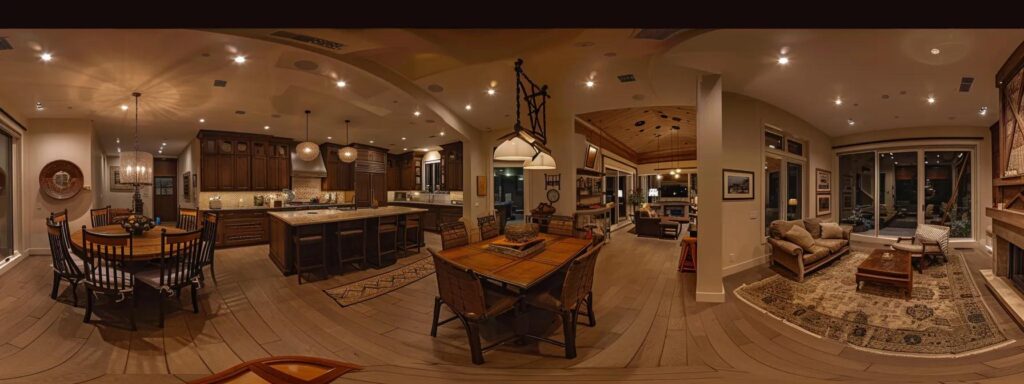
Interior design plays an equally crucial role in the success of a home addition. After the structural work is complete, designers transform the new space into a comfortable and functional area that resonates with the homeowner’s style. Just as in elementary arithmetic where every digit or component plays a part in the final sum, every design element—from color palettes to furniture layouts—contributes to the overall harmony and functionality of your addition.
Choose Color Schemes That Enhance Natural Light
A well-planned color scheme can dramatically enhance the perceived space and ambiance of an addition. Lighter shades such as whites, creams, and pastels are proven techniques for making rooms appear larger and more open. Strategic use of accent walls and complementary hues can create a balanced environment that accentuates natural light and reduces the need for artificial lighting. For instance, research in interior design suggests that rooms painted in bright, reflective colors can enhance a space’s brightness by up to 30%, resembling how a well-executed addition in math can yield an optimal summation. Homeowners should consider the room’s function and the amount of available natural light when selecting colors, ensuring that the final design promotes a sense of calm and order.
Select Functional Furniture for Maximum Space Utilization
Furniture selection is instrumental in optimizing the layout and functionality of a new space. Multi-purpose furniture and custom-built pieces can address both storage needs and aesthetic appeal. Items like built-in shelving units, extendable dining tables, and modular sofas exemplify designs that combine function with style. Think of these choices as analogous to using integer addition where every piece must contribute clearly and effectively to the overall structure. In instances where space is at a premium, such as in additions for urban homes or compact designs ideal for kindergartens and preschools, furniture that serves multiple purposes can be a game changer. Furthermore, selecting pieces with a minimalist design helps enhance flow and ensures the addition remains visually light and inviting.
Investigate Open Floor Plans for Modern Aesthetics
Modern interior design increasingly favors open floor plans, which allow for fluid movement between different functional areas. The removal of unnecessary walls creates a seamless environment that can enhance both connectivity and natural light distribution throughout the space. Open floor plans are particularly popular in home additions because they adapt well to various uses, from family gatherings and dining areas to home offices. This trend parallels the concept of the associative property in mathematics, where regrouping elements can lead to more efficient and appealing outcomes. By kind of “adding” rooms together without strict boundaries, homeowners can create versatile living spaces that accommodate a myriad of activities and lifestyles.
Incorporate Eco-Friendly Materials in Your Design
Just as sustainable building materials are integral to the structural success of a home addition, eco-friendly interior design choices have become a vital aspect of modern renovations. Using materials such as bamboo flooring, low-VOC paints, recycled glass countertops, and sustainably sourced fabrics not only improves the environmental footprint of the project but also adds to the aesthetic appeal with natural textures and colors. These options are often preferred by environmentally conscious homeowners who also value the long-term durability and reduced maintenance costs associated with green materials. Eco-friendly choices can be integrated seamlessly into both modern and classic design themes, proving that sustainability and style can coexist harmoniously.
Accessorize With Personal Touches for Comfort
Interior design is not complete without incorporating personal touches that reflect the homeowner’s personality and lifestyle. Accessories such as artwork, area rugs, throw pillows, and accent lighting personalize a space and create a welcoming atmosphere. These subtle additions work much like the small but significant items in arithmetic addition—while they may seem minor, they contribute greatly to the overall ambiance and functionality of the space. Homeowners are encouraged to choose pieces that have both aesthetic appeal and significance, ensuring that the new addition feels truly like an extension of their home.
Plan Layouts That Promote Flow and Accessibility
Effective layout planning is at the heart of any interior design strategy. For spacious additions, it is vital to ensure that the arrangement of furniture, lighting, and decor elements promotes a natural flow of movement. Accessibility is another crucial factor, particularly in homes that are designed to accommodate multi-generational living. Wide pathways, ergonomic furniture placement, and the incorporation of universal design principles ensure that every occupant, regardless of age or mobility, can navigate the space with ease. Much like the commutative property in addition, where the order of numbers does not affect the result, a well-planned layout offers flexibility and uniformity, ensuring that every aspect of the design contributes to a cohesive environment.
Key Takeaways: – Light and reflective color schemes are key to enhancing natural light. – Functional, multi-purpose furniture maximizes available space. – Open floor plans create modern, adaptable living environments. – Eco-friendly interior materials contribute to sustainability and style. – Personal touches and thoughtful layouts ensure comfort and accessibility.
Explore the Impact of Seasonal Trends on Home Additions
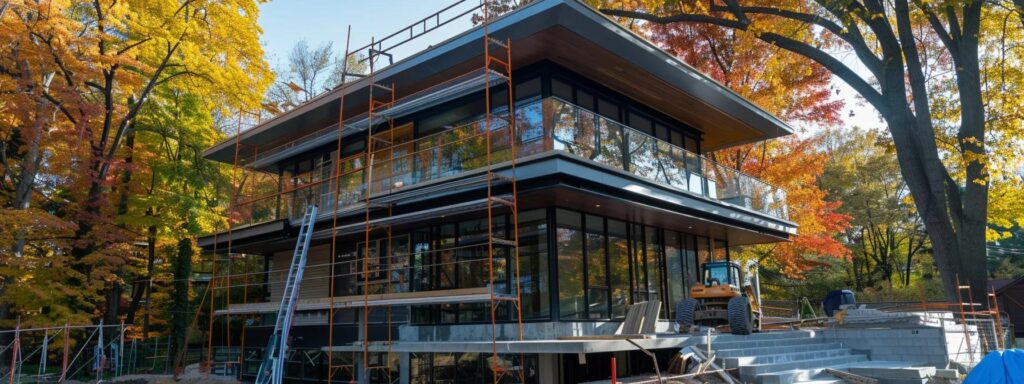
Seasonal trends have a profound impact on home additions, affecting both the construction process and the design outcomes. Timing a home addition project with the seasons can optimize construction efficiency and subsequent energy management. As in mathematics where each operation must consider seasonal variations in measurement and summation, homeowners must plan project timelines and design choices to best suit the seasonal climate.
Schedule Projects Around Weather Patterns for Efficiency
Scheduling home additions requires careful consideration of local weather patterns. In regions like Des Moines, where climate can vary widely between seasons, planning construction during milder weather can avoid delays and reduce additional costs related to weather-related work stoppages. For instance, starting a project in spring or fall minimizes exposure to extreme temperatures, ensuring that materials cure properly and construction workloads are maintained on schedule. Contractors often plan work in phases—similar to breaking a complex math problem into smaller, more manageable parts—to align with favorable weather windows. An efficient schedule not only saves costs but also ensures that the final design is well-integrated into the natural environment.
Analyze How Seasons Affect Home Maintenance Needs
The seasons significantly influence home maintenance and, in turn, affect how additions are designed and utilized. During winter, for instance, insulation and energy efficiency become priorities. In contrast, summer months call for ample shading and cooling technologies. Homeowners are advised to integrate seasonal design elements that address these needs effectively. For example, installing energy-efficient windows not only enhances natural light during winter but also helps maintain cool temperatures in summer. Similar to how adding and subtracting rational expressions requires careful balancing of terms to achieve equilibrium, effective seasonal planning ensures that a home addition remains comfortable and cost-efficient year-round. Regular maintenance schedules and seasonal updates can also prolong the lifespan of your addition, making it a wise long-term investment.
Review Seasonal Design Elements to Brighten Spaces
Seasonal design adaptations play a pivotal role in how home additions are enjoyed throughout the year. Incorporating elements such as seasonal lighting, decorative accents, and adaptable outdoor configurations allows homeowners to refresh their spaces with minimal renovation. For example, using light, airy fabrics and bright color accents in the spring can create an energetic and welcoming space, while warmer tones and textured materials in the fall foster a cozy environment. This cyclical approach to interior design is similar to the rhythmic process of addition practice, where adjustments based on seasonal variables ensure that the operation remains balanced and pleasing. Homeowners can maximize the visual impact of their addition by planning for seasonal refreshes that subtly alter the ambiance without requiring significant overhauls.
Plan Additions for Energy Efficiency All Year Round
Energy efficiency is an increasingly important consideration that ties directly into seasonal trends. Designing home additions that incorporate modern insulation, smart thermostats, and energy-efficient appliances can dramatically lower utility costs and create more sustainable living conditions. Seasonal energy audits and careful planning ensure that your addition performs optimally regardless of the weather. Much like the precision required in mathematical functions and formulas for addition, every element—from window placement to HVAC system selection—must be strategically planned to enhance energy performance. Through innovative design and the use of certification programs like ENERGY STAR, homeowners can recognize measurable improvements in energy consumption that translate to substantial cost savings over time and contribute positively to the environment.
Consider Seasonal Market Demand for Increased ROI
The timing of a home addition project can also influence the potential return on investment (ROI). Certain seasons may see higher demand for expansions, particularly in regions where weather conditions drive families indoors or outdoors at different times of the year. By aligning project timetables with market trends, homeowners can better capitalize on increased buyer interest and property market fluctuations. This strategic planning is similar in nature to measuring step-by-step functions in addition where each operation contributes to the overall outcome. A well-timed project can appeal strongly to buyers and even increase resale value, making seasonal trends a key component of your long-term financial planning. Contractors and real estate experts suggest that planning projects during periods of moderate demand can yield quicker turnovers and higher satisfaction rates.
Adjust Your Timeline Based on Seasonal Labor Availability
Labor availability is another factor influenced by seasonal trends. During peak construction seasons, securing skilled labor may become more challenging and expensive due to high demand. Conversely, off-peak seasons might provide opportunities to negotiate better rates and ensure more consistent project timelines. This adjustment mirrors the strategy used in modular addition, where elements are intentionally scheduled and added based on resource availability. Homeowners should discuss the labor market dynamics with their contractors and plan for possible delays by incorporating flexible timelines. Understanding these seasonal labor trends is essential for keeping your project on time and within budget.
Key Takeaways: – Efficient scheduling around weather patterns reduces construction delays and costs. – Seasonal design elements can enhance comfort and energy efficiency. – Timely updates improve long-term ROI and property market appeal. – Energy efficiency improvements should be planned for year-round comfort. – Labor availability and seasonal market trends must be factored into project timelines.
Final Thoughts
In summary, the trends in home additions for 2025 reflect a dynamic mix of modern design, sustainable materials, smart technology, and practical budgeting strategies. Homeowners who take the time to understand these trends—from stylish interior designs to strategic seasonal planning—can ensure their projects are both cost-effective and forward-thinking. Choosing the right contractor and navigating permits and regulations with care will further enhance project success. Homeowners in Des Moines and surrounding areas have a unique opportunity to upgrade their homes with
that truly add value and comfort.
Frequently Asked Questions
Q: What are the most popular styles in home additions for 2025? A: Popular styles include minimalist designs with open floor plans and natural materials such as reclaimed wood and stone. These styles are designed to maximize natural light and seamlessly merge indoor and outdoor spaces, offering functionality and elegance.
Q: How can I manage my home addition budget effectively? A: Effective budgeting involves obtaining detailed quotes, accounting for hidden expenses, and setting aside a contingency fund of 10–20%. It’s also wise to explore multiple financing options, including home equity loans and government-backed programs, to manage costs.
Q: Why is it important to verify a contractor’s licensing and insurance? A: Verifying licensing and insurance ensures that the contractor meets local building standards and protects homeowners from potential liabilities. It is essential to obtain copies and confirm details with local authorities to avoid future legal and financial issues.
Q: How do seasonal trends affect home addition projects? A: Seasonal trends impact scheduling, energy efficiency, and design aesthetics. By timing projects with favorable weather and labor availability and incorporating seasonal design elements, homeowners can reduce delays and improve overall efficiency and ROI.
Q: What interior design ideas can maximize space in a new addition? A: Key interior design ideas include using light color schemes, selecting multi-purpose furniture, adopting open floor plans, and integrating eco-friendly materials. Personal touches and effective layout planning further enhance the comfort and functionality of the space.
Q: How do I ensure compliance with local building permits and regulations? A: Ensure compliance by researching local permit requirements, understanding zoning laws, communicating with local authorities, and scheduling necessary inspections. Staying informed about regulation updates prevents future legal complications and ensures the project meets all safety standards.
